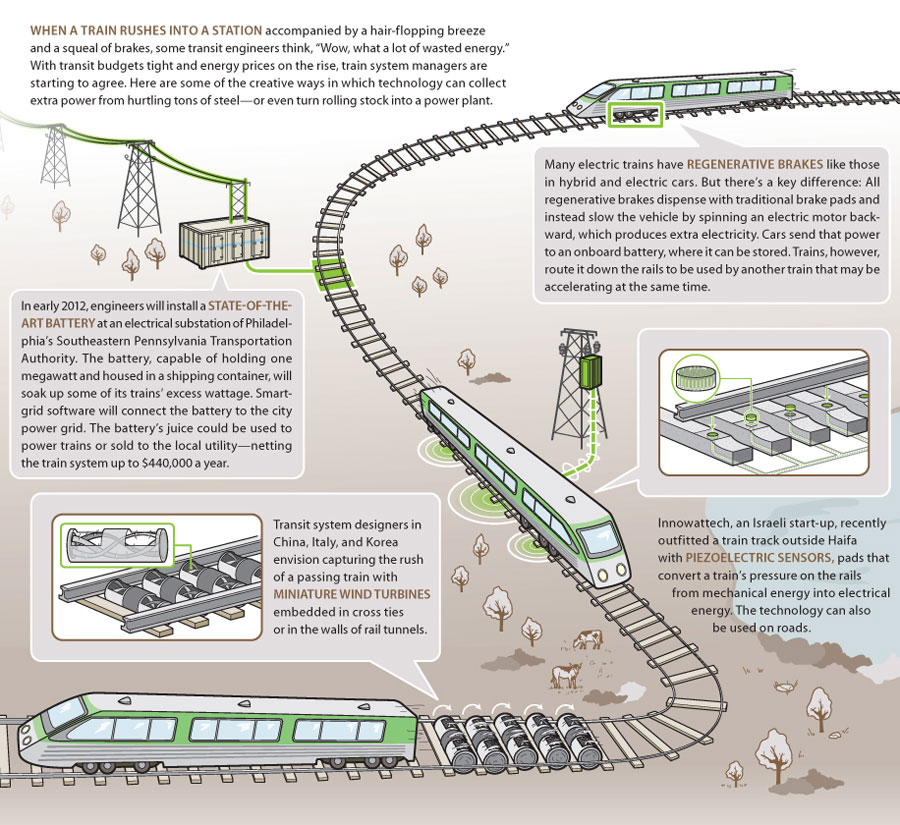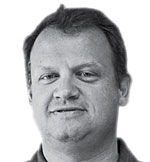sierraclub.org - sierra magazine - jan/feb 2012 - innovate: train to tomorrowland

Infographic: Brown Bird Design
RAIL HERO
 Andrew Gillespie's love for electric trains is a complicated thing. As the chief power engineer for the Southeastern Pennsylvania Transportation Authority, the sixth-largest U.S. transit system by ridership, he yearns for those gleaming bullet trains found in Japan and Germany. But he's in Philadelphia, where the electric rail lines are a century old and the system is perpetually short of money.
Andrew Gillespie's love for electric trains is a complicated thing. As the chief power engineer for the Southeastern Pennsylvania Transportation Authority, the sixth-largest U.S. transit system by ridership, he yearns for those gleaming bullet trains found in Japan and Germany. But he's in Philadelphia, where the electric rail lines are a century old and the system is perpetually short of money.
So when local smart-grid company Viridity Energy approached him with a plan to link his vast network of subway cars--and the electricity from their regenerative brakes--to the power grid, he saw the light. His agency could transform its creaky old infrastructure into an ultramodern asset and make cash by selling power to the local utility.
Though the pilot project involves just five subway stops, its potential is impressive. A six-car train can generate three megawatts (enough to power 125 homes) during the 15 seconds it takes to stop. Gillespie thinks the project can pay for itself in four years and then fund its own expansion to the rest of the system. Transit managers in other cities are closely watching Philadelphia's experiment.
Gillespie grew up in the 1970s playing with his dad's model trains, and he developed an early interest in electrified transit. "Electric trains are quiet, they're sleek, they can get to their top speeds much quicker. Diesels are dirty, they're loud, and they blow cinders," he says.
By trimming energy usage, the project will also help put the brakes on greenhouse-gas emissions from Pennsylvania's old coal-fired power plants. And perhaps help residents understand the role transit plays in making cities cleaner and more livable. "What I like about Philly is that there's a lot of opportunity to live car-free," Gillespie says. "Trains are an opportunity to make the area better."
—David Ferris
Andrew Gillespie photo courtesy of SEPTA/Andrew Busch